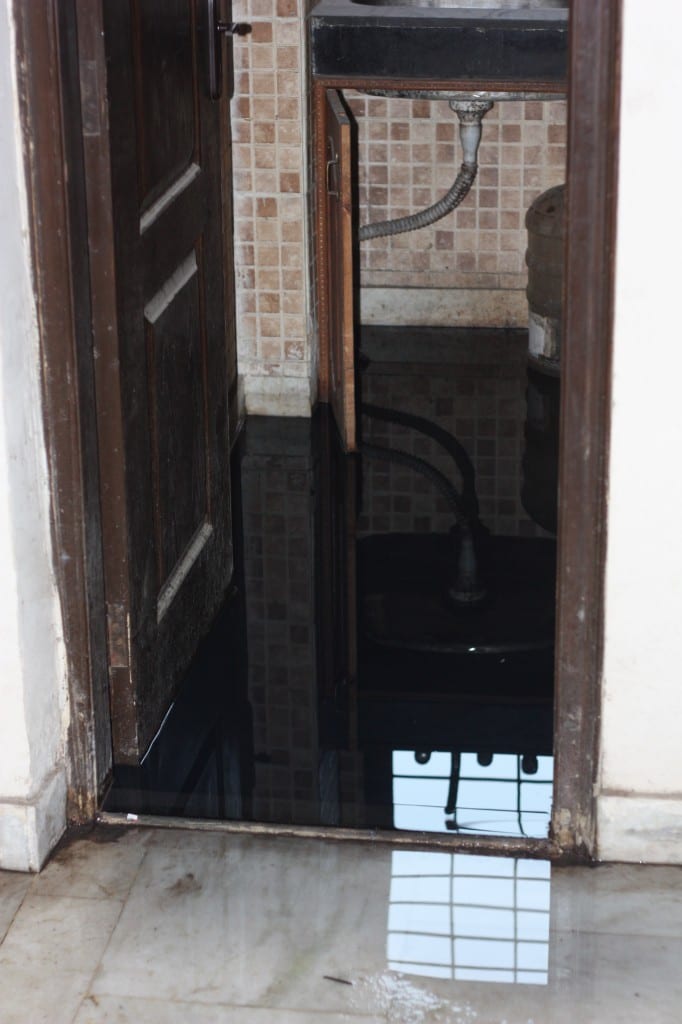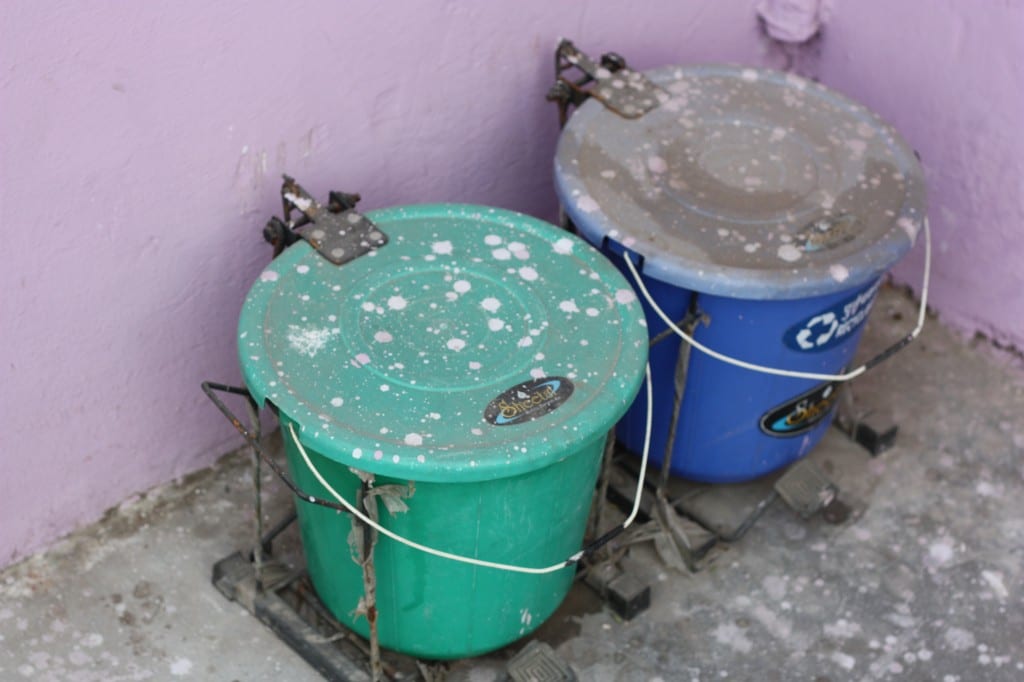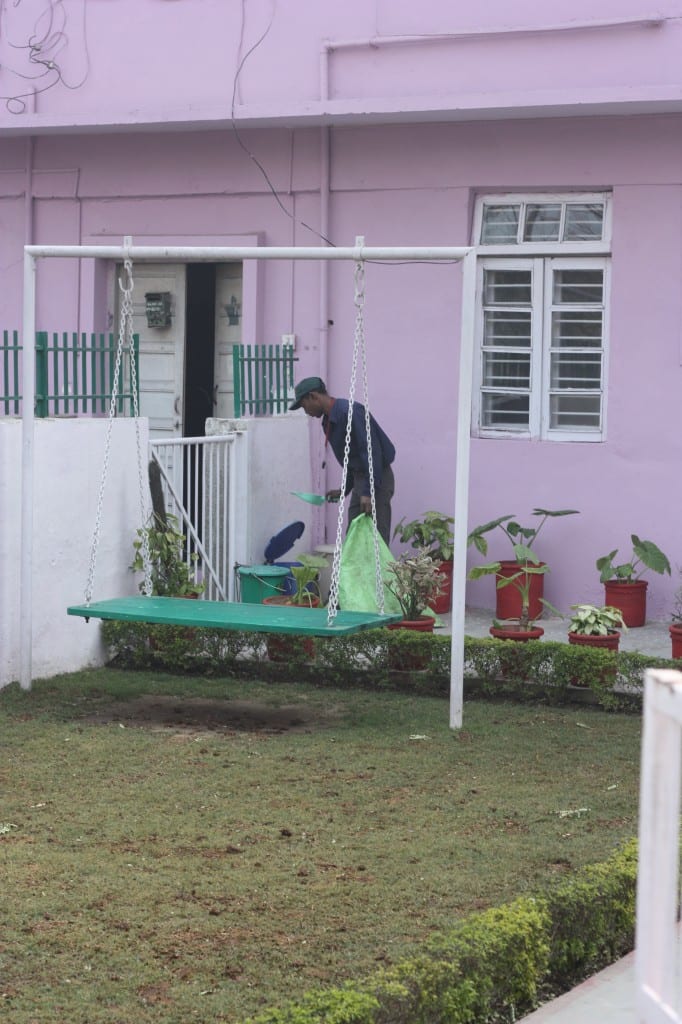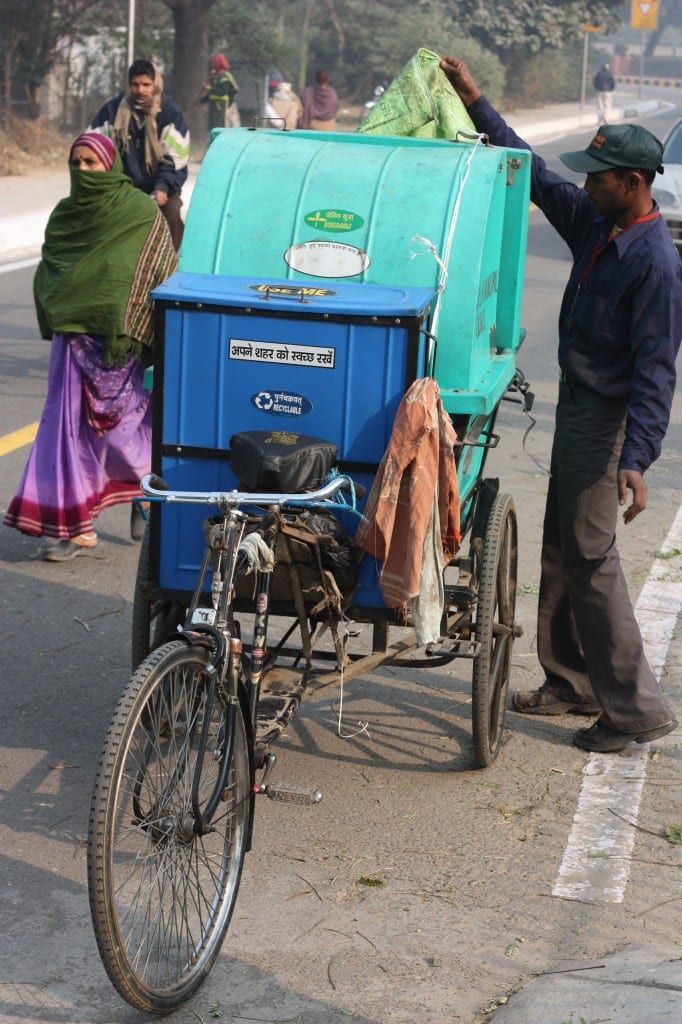I’ve been to the Nagloi area twice now. The first time I was just shown around and the second time my colleague Brij interviewed some people who work and live in that area. You can reach Nagloi very easily by Metro and at first sight there seems to be nothing special about the area. However, if you wander away from the Metro station and follow the main road, tarmac soon turns into soil, loose stone and dust. The infrastructural conditions decrease rapidly. If you then make a turn into one of the side streets, you are in the middle of India’s informal recycling sector – even though this will not become apparent to you straight away.
Indeed, Nagloi is an area in which waste materials are imported from all around India. There is even waste that is brought into this area from other countries. As you move through the side streets you might manage to get a glimpse through one of the gates, which are usually. You can then spot piles of waste, open fires and people sitting on the floor amongst plastic bags and heaps of segregated materials. The gates are usually closed however, and this has a good reason. Most of the buildings here are located on what is officially recognised as agricultural land. This means that the people who run recycling businesses in this area do not do this legally as this activity is recognised as industrial work… and obviously not as an agricultural occupation. Thus, the authorities are “officially” not aware of these recycling units, which vary in size, and which are specialised in the recycling of all sorts of materials. The area is renowned as a centre for plastics-recycling however.
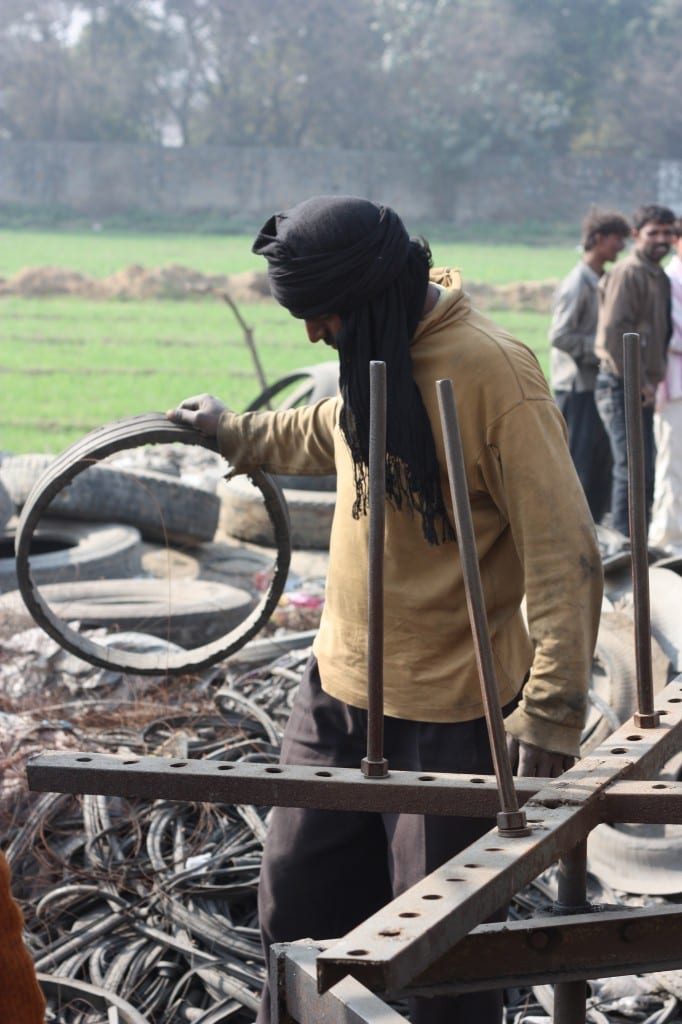
Recycling tires on “agricultural land”
Most of the owners of the recycling units do not welcome researchers who ask questions. They like people who ask if they can take pictures even less. Who knows, these outsiders might work for the government and want to close their illegitimate businesses down. Therefore, as you walk through the area you might never become aware what is actually going on behind the red brick walls. However, if you continue your journey even further, at some point you will reach one of the “non-permanent” recycling quarters, i.e. shantytowns, in which people live and work in the waste.
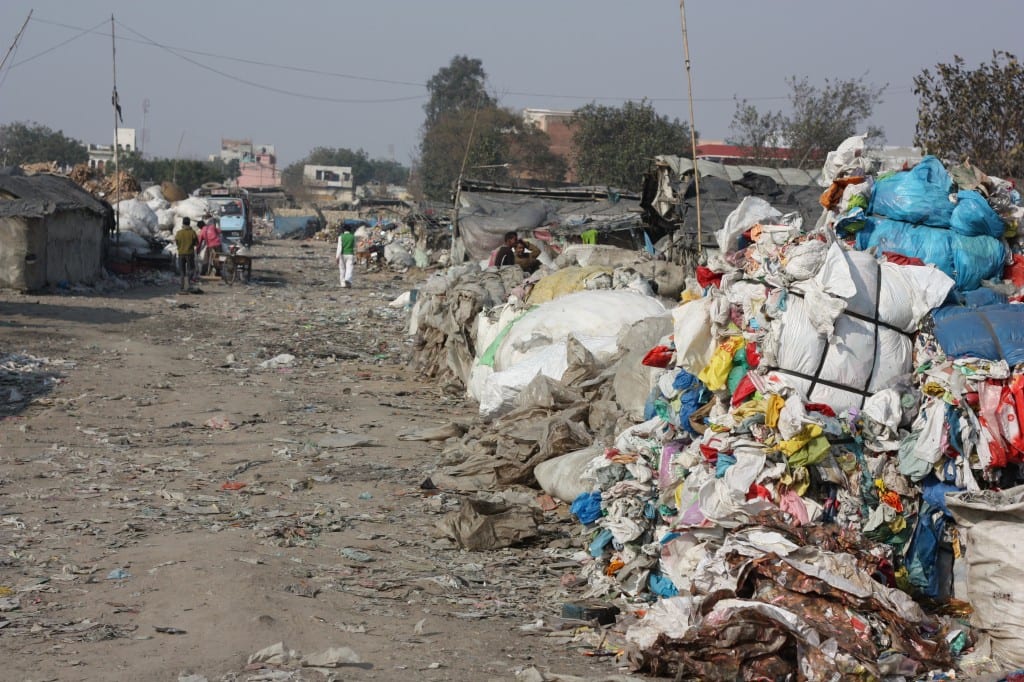
Living in Waste
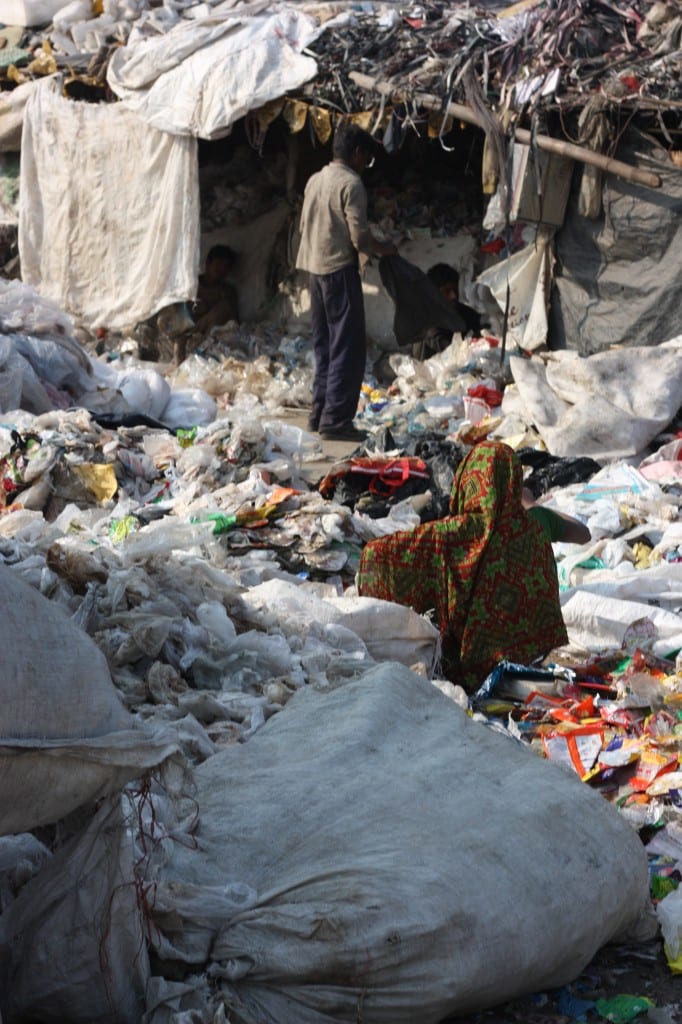
Living in Waste
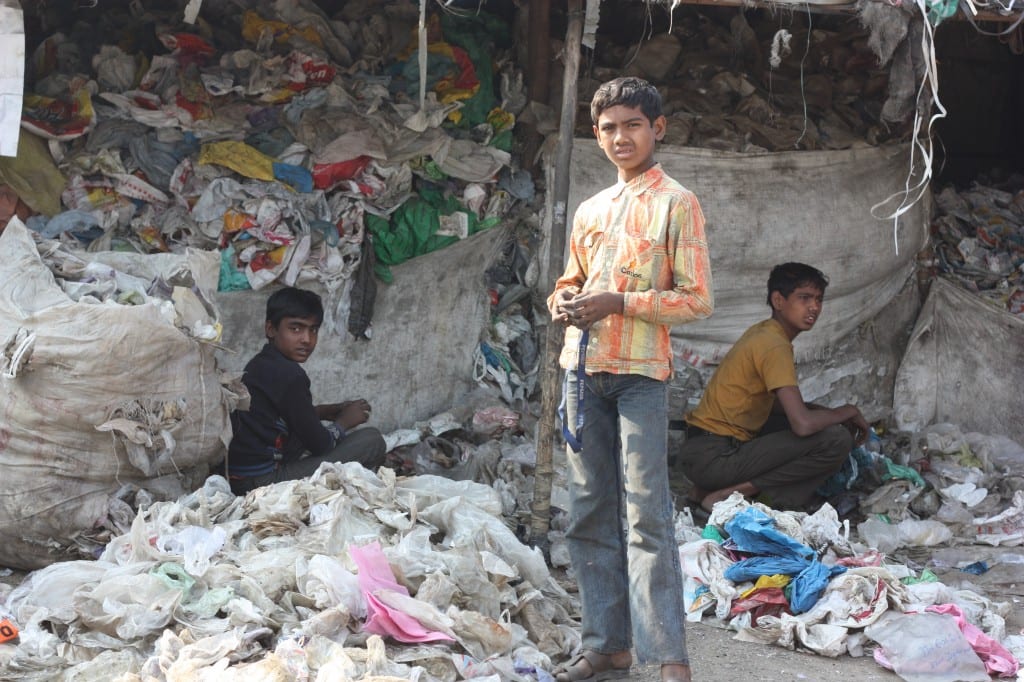
Working in the Waste
If you are walking through this area in the winter, like I did, you will somehow manage to bear the sight and the smell. It is dry, not too warm and there only some few flies. However, what the place looks like during the rainy season, or indeed during India’s hot summer months I don’t want to imagine.
The place that I saw was located next to a tiny canal. In fact it seemed as if the water stood still and as you can see in the picture below, it represented the stereotype of what one imagines to be polluted water. Fortunately people do not seem to use this water directly for washing and consumption. However, they do have hand pumps (located just next to this toxic brew), which they use to pump up water from underground sources. If I tell you Delhi’s tab water cannot be consumed, as it is not potable, you can imagine what the quality of this water must be like.
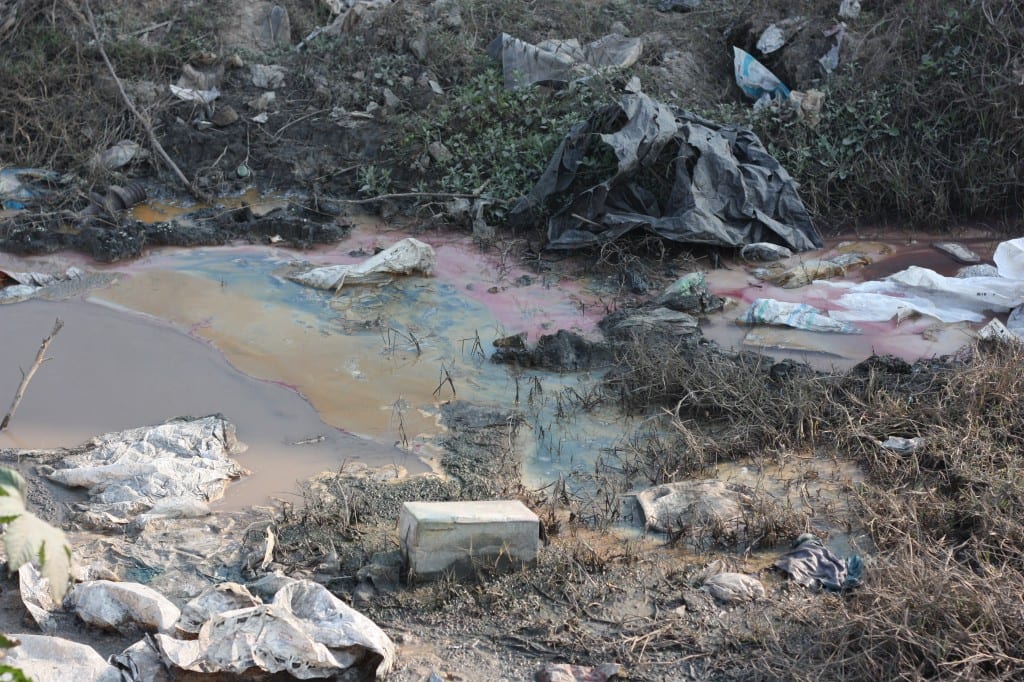
Toxic Water
When I mentioned earlier on that the smell was supportable, then I did of course not mean that it was it did not smell. In fact, it stank! This is down to several reasons. Firstly, people live here in sheds, made from waste materials. Their (rented!!!) properties are filled with separated and non-separated plastic waste of all sorts. Open your waste bin in the summer and you get the idea. Additionally to that comes the smell of burnt plastic. Many people, having separated plastic material into its different types, or having taken apart a specific type of packaging either burn the materials which are of no value to them, or, they smelt the plastics that can be recycled into bricks. These bricks are usually sold on to different units that transform them into pellets, which are eventually used to create new “things”. So you can now also see how plastics are recycled. The fires are in the open and the workers who feed them with plastic materials do not wear any face masks that could protect them from the toxic fumes and gases that are released as the plastics burn and melt.
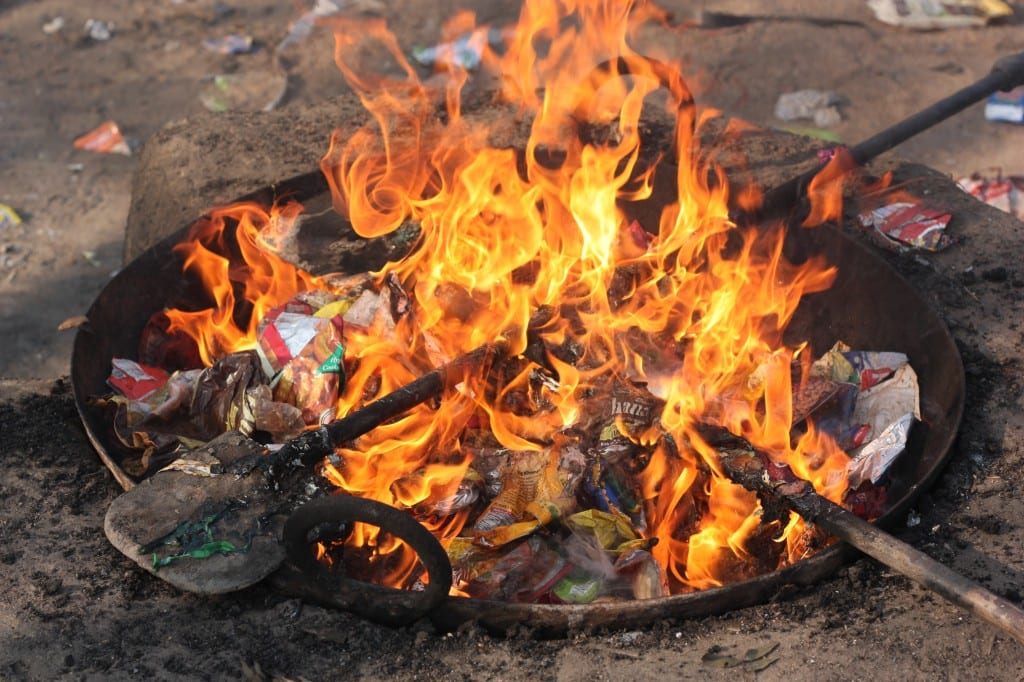
Melting packaging
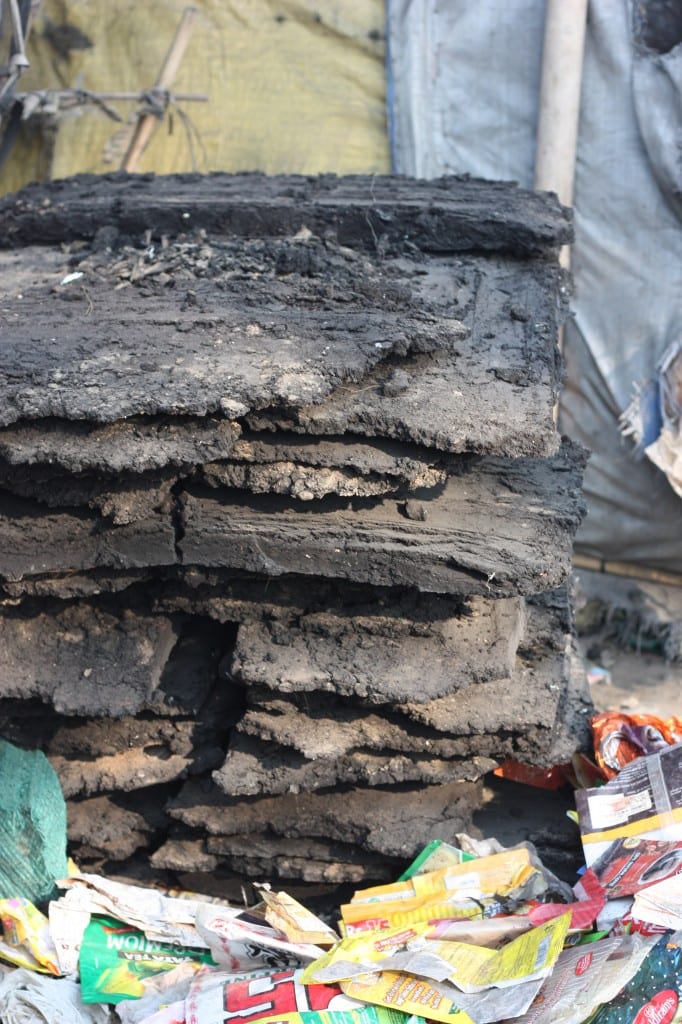
“Bricks” made of of smelted plastic
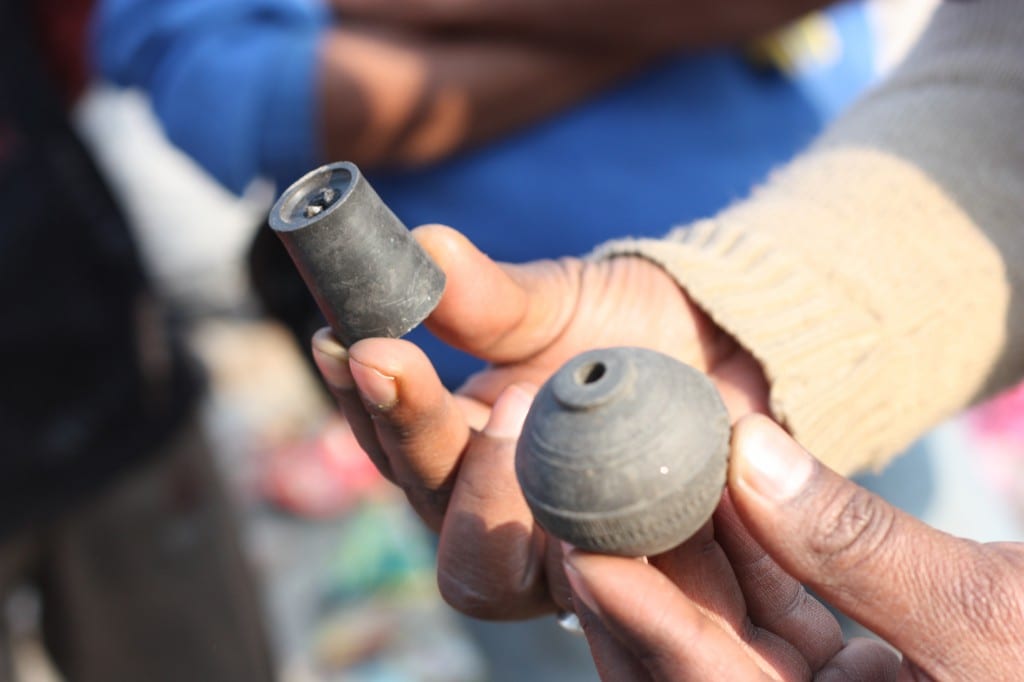
What a recycled product from this material can look like
There are also a lot of stray dogs running around. Half naked children play in and with the waste. I saw one child of about two years who was chewing on a pen-like object that was covered in mud and dirt. Nobody seemed to bother. Many young children however were not playing. They have to help in their parents’ recycling units. I observed one particular case, which deeply concerned me. A little boy, of no more than eight years, was separating the top part from cosmetic cream and toothpaste tubes with a sharp knife that can best be described as a scythe blade which is mounted to a wooden base that stands on the floor. As I was just thinking that this might be a dangerous occupation for a little boy, the child cut himself in his finger. It immediately started bleeding. The boy’s reaction was very calm though – I’m even tempted to say it was routine. Whereas any child of the same age that you and I know would have started to cry and would have looked for comfort and attention, this little fellow just interrupted his work to grab one of the tubes lying next to him. He treated the wound on his little fingers with some sort of crème that I could not identify. After the bleeding had stopped (well more or less that is) he just got on with his work and continued to cut the tubes into two.
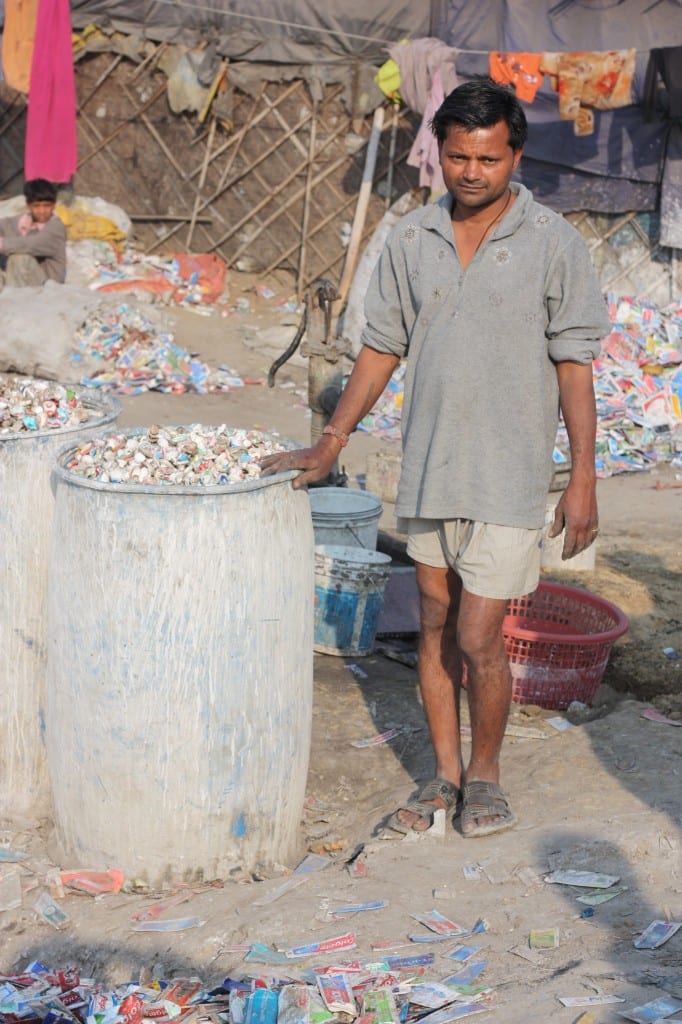
Recycling toothpaste tubes
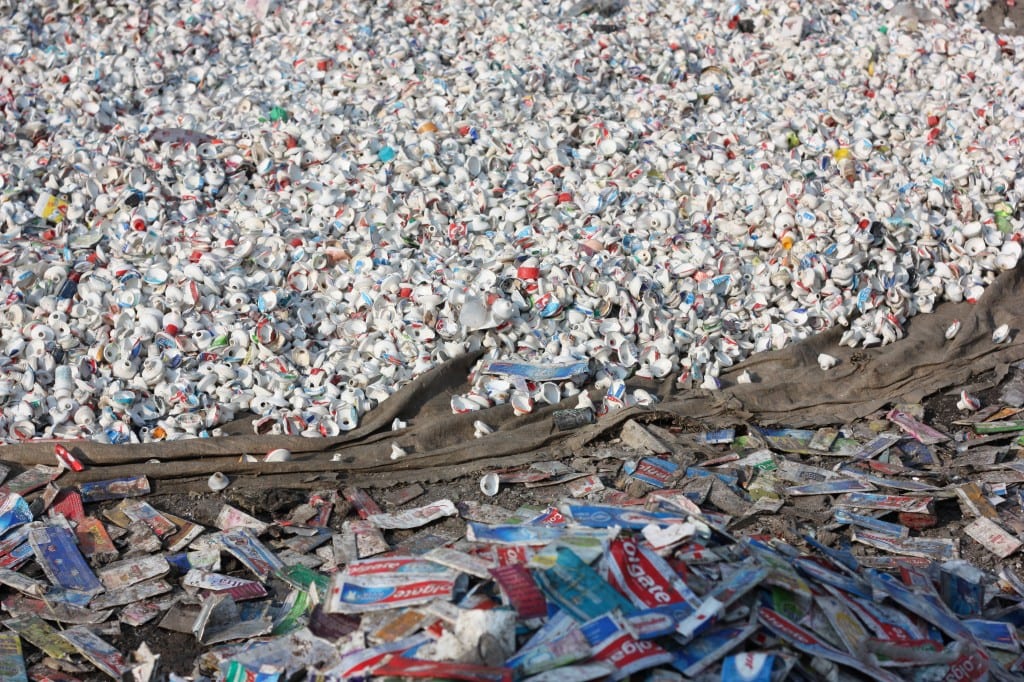
Recycling toothpaste tubes
As I have already indicated, the health of adult recyclers is compromised in many ways too. And I’m not talking about the poor sanitary conditions and the multiple sources from which they can catch an illness. We talked to a plastic smelter who has been melting plastic materials for three months now. This he does at an open fire (see pictures above). Already, he has noticed some respiratory problems: every morning after he wakes up, he suffers from a very bad cough. I don’t think there is any doubt that this is related to the toxic fumes he breathes in day, in day out.
I realise that the picture I’m painting here is very grim. Unfortunately this is what I’ve observed and obviously the conditions in the shantytowns are highly visible (once you’re there) and probably represent the most extreme conditions under which informal recyclers live and work. I do however think that it’s important that the Air France passenger (that includes myself) realises that the head phones s/he’s offered so kindly so s/he not bored during the flight, those same headphones that s/he leaves behind in the plane, end up in this place and are taken apart by the hands of informal child recyclers.
It’s also very hard to explain what goes on behind the walls of the stone built recycling units. As I said before, it is not easy for outsiders to gain access to these units. However, I was let in to one of these units and, what was even more surprising I was allowed to take pictures of it. My colleague Brij had asked to take pictures of the same unit a couple of weeks back and was not allowed.
I think that me standing out as a Westerner does make a big difference. I initially thought that, as it has happened in many other cases I’ve read about, people would not want to give any information to an outsider who does not even speak the language. However, most recyclers that we’ve spoken too seem to be very curious about me. They want to know what I’m doing here and why on earth I’ve come all the way from England to “visit” them. This seems to be in our advantage, as it is a very good icebreaker. People talk to us first. Hence we often need not have to try to engage them into a conversation and having answered their questions we can informally ask them questions that we have about them. I thoroughly believe however that most of them think that I’m crazy. (They’re probably not too wrong.) One of the recyclers whom Brij told that I’m here as I want to learn about recycling was very quick on his feet. He just pointed at a pile of waste and very dryly proclaimed: “If he wants to know about recycling he can sit down and work for an afternoon with me. I will teach him all about it.”
Anyhow, the “gated” recycling unit that I was allowed into is specialised in the recycling of tin and aluminium. As with in the plastic-recycling process, the materials are first separated and then smelted into bricks. Even though conditions seemed better than in the slum area, the waste materials are still separated bare-handedly on the floor, and the cans are melted in an open fire. Everything is very basic.
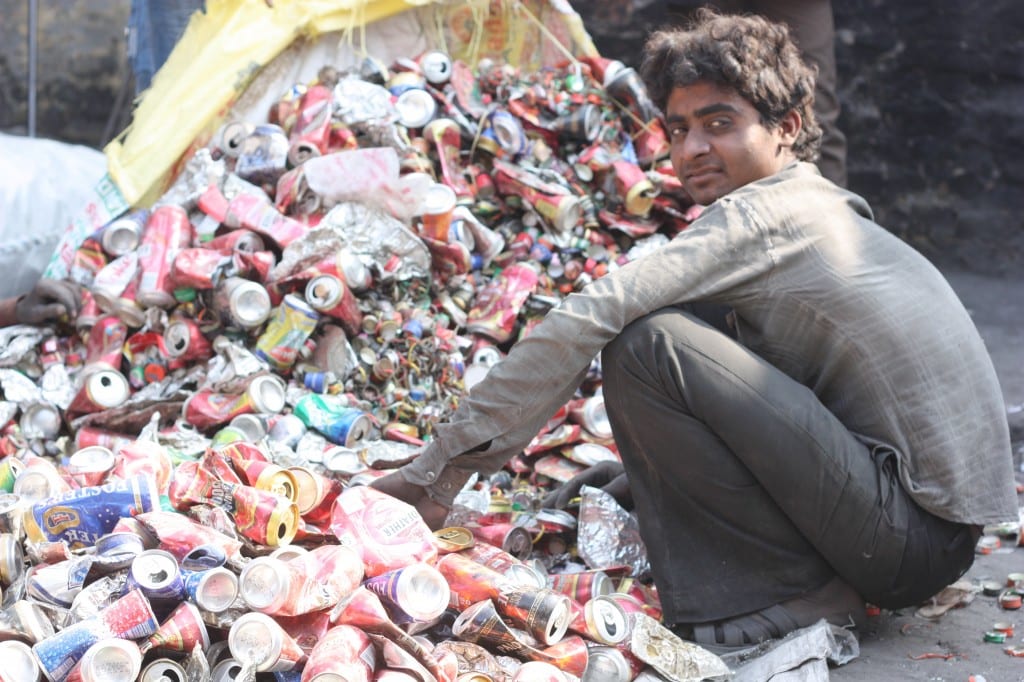
Segregating cans and tins
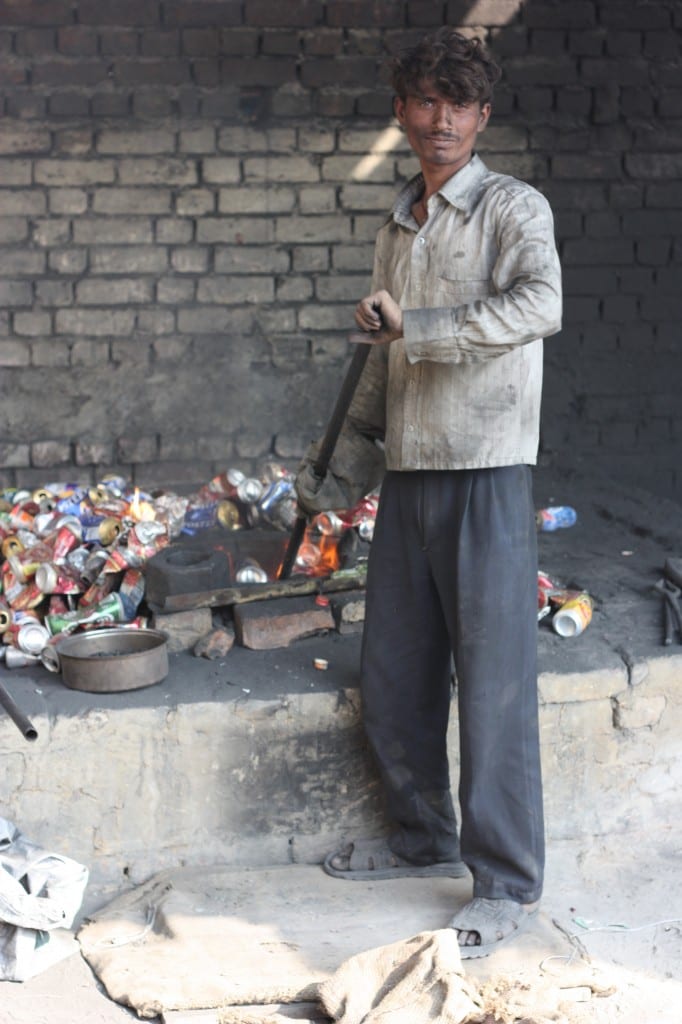
The recycling process
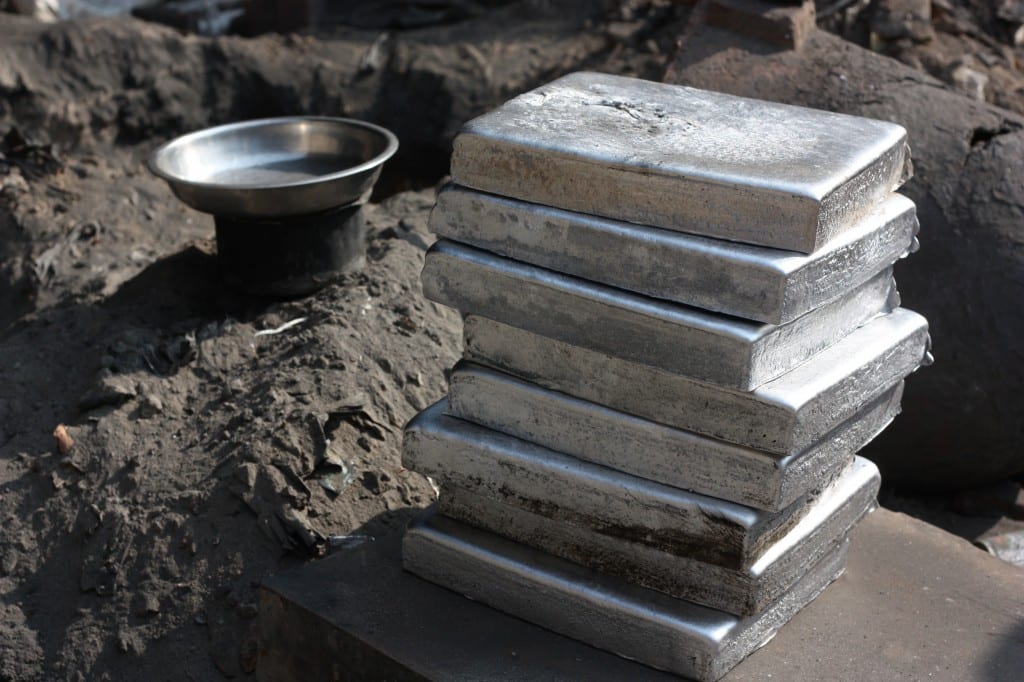
The End Product
I hope the photos help to better illustrate what I witnessed. As usual, this entry is becoming rather long and I think you get an idea of one small part of India’s informal plastic recycling hub. I’m always happy to read your comments and of course welcome any questions you might have.
Best wishes,
Sven














